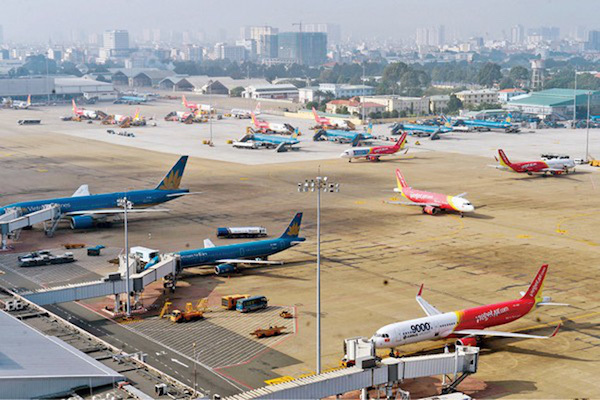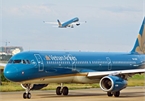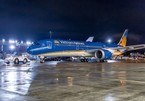The 5-month review report of the Airports Corporation of Vietnam (ACV) showed that though the biggest airport development company gained satisfactory business results, there were signs of a slowdown of the aviation market growth after years of hot development.

In the first five months of the year, the airports put under the control of ACV received 46.7 million passengers, an increase of 8.7 percent over the same period last year. Of this, the number of domestic passengers increased by 6.2 percent and international passengers 13 percent.
The number of takeoffs/landings increased by 10.6 percent compared with the same period last year, which represented a better growth than planned. However, the growth was obtained thanks to the joining of Bamboo Airways.
The airports with the highest growth rates in international transport output include Noi Bai (13 percent), Da Nang (27 percent), Cam Ranh (26 percent) and Phu Quoc 86 percent.
|
The airports with the highest growth rates in international transport output include Noi Bai (13 percent), Da Nang (27 percent), Cam Ranh (26 percent) and Phu Quoc 86 percent. |
CAAV’s president Lai Xuan Thanh said he can see signs of slowdown especially in the international transport market.
The world economy has been growing more slowly with increased risks and challenges, decreased trade and investment activities and disagreements among big countries in the global trade system.
The macroeconomy in Vietnam has been stable, which is a great advantage, but the country is facing challenges because of the growth slowdown in some key export items and low public investment capital disbursement.
The Vietnamese aviation market is being exploited by 68 air carriers from 25 countries and territories, and five domestic air carriers, namely Vietnam Airlines, Jetstar Pacific (JPA), Vasco, Vietjet and Bamboo Airways.
Though the number of domestic air carriers is just equal to one third of Thailand’s, the competition is fierce.
By early Q1 2019, the Vietnam Airlines group, including Vietnam Airlines, JPA and Vasco held 52 percent of the domestic market, Bamboo Airways 3 percent and Vietjet 45-46 percent.
Bamboo Airways, the youngest player, is trying to expand operation scale. The air carrier has asked the Civil Aviation Authority of Vietnam’s (CAAV) for permission to increase its charter capital from VND700 billion to VND1.3 trillion, and expand the fleet to 40 aircraft in 2019.
The air transport supply will be increasing considerably in 2019 as 50 A321 Neos will join Vietjet’s fleet.
Meanwhile, Vietnam Airlines expects to receive eight more wide-body aircraft in 2019.
Mai Lan

Vietnam Airlines gets 4-star airline rating
The national flag carrier Vietnam Airlines has been certified with a 4-star airline rating by prestigious international air transport rating organisation Skytrax for the fourth consecutive year.

Vietnam Airlines apologises for delayed flight
Vietnam Airlines has issued an apology to 200 passengers when a flight to Germany was delayed 33 minutes to wait for a passenger.
 Businesses say that the air transportation market is becoming saturated and growth has slowed down. The era when air carriers obtained growth with an increased number of passengers appears to be over." itemprop="description" />
Businesses say that the air transportation market is becoming saturated and growth has slowed down. The era when air carriers obtained growth with an increased number of passengers appears to be over." itemprop="description" />